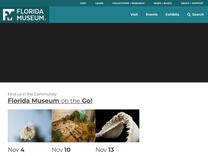Move over, armadillos. There’s a new bone-plated mammal in town – Research News https://www.floridamuseum.ufl.edu/science/move-over-armadillos-theres-a-new-bone-plated-mammal-in-town/
Mammals are a bit odd when it comes to bones. Rather than the bony plates and scales of crocodiles, turtles, lizards, dinosaurs and fish, mammals long ago traded in their ancestral suit of armor for a layer of insulating hair. Armadillos, with their protective and flexible shell of imbricated bon
However, aside from similarities in their DNA and potentially the shape of their

